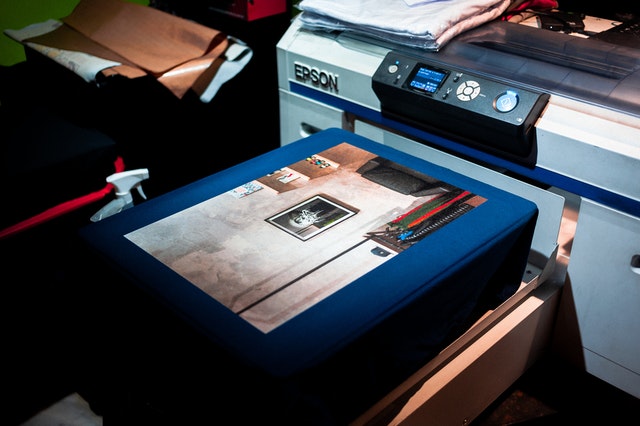Hardwares
Different types of printers? How to make a wise choice?

Printers have gained massive importance in the last few years. The speed, efficiency, and quality in which they not only print documents but perform several other functions make them highly valued in various industries. Undoubtedly, the discovery of the printer has been one of the greatest inventions of humankind.
Owing to significant advances in science and technology, there are several types of printers that are available in the market. Each of them caters to different purpose.
Let check the different types of printers and know more about them:
1) Laser Printers
Laser printers are one of the most highly sought printers for workplaces. These printers are efficient and print considerably fast.
This helps in increased productivity as more documents can be printed with relative ease.
It is most favourable for printing text documents. These are not suitable for printing glossy pictures or other unusual paper sizes.
The fact that it produces top-quality output and is quiet makes them perfectly suitable for use in offices.
2) Inkjet Printers
Inkjet Printers are the most commonly used printers in homes as well as offices. These come in a very economical budget but often have slow printing speed.
They also produce low-quality output that may affect your work productivity and use toners instead of ink in the cartridge.
Though in recent years, inkjet printers have developed and now are quite diversified and specific in their features and efficiency. These printers have been the basic ones that people started with for the past several years.
3) Large Format Printers
Large format printers are largely used for printing posters, large photographs, banners, etc. These are quite expensive and require a large space for its accommodation.
They have a wide range of functionalities. Some of these printers can easily handle photorealistic pictures with about 1440 DPI resolutions.
They can also print pictures in widths as large as 98 inches. The usage of different colour inks in huge tanks makes this possible. These printers are only purchased for professional usage.
4) Cardstock Printers
Cardstock papers vary distinctly from the regular papers in terms of weight and thickness. Most regular printers cannot handle the heavyweight cardstock paper and can result in making an utter mess.
To avoid this, cardstock printers are designed. These printers are equipped with features that make them handle the printing of cardstock papers with ease. Both inkjet and laser printers can support cardstock printing if fitted accordingly. These printers generally use more inks or toners than the regular ones.
5) Photo Printers
These printers are specifically designed to print out images. They are usually portable and small in size.
Due to the relatively small dimensions, these printers cannot carry out heavy functionalities and usually print images at small paper sizes.
But, full-size colour printers are also available for more extensive image printing. These printers usually have ports to plug in media cards and offer both wireless and wired connections to your system. Most of these printers also offer basic editing features.
6) Multifunction Printers
The Multifunction Printers of MFP is a great economical choice for professional use. These printers are designed in a way that it not only prints documents but also serves the purpose of several other machines.
Apart from being a printer, it also acts as a copier, fax machine, and scanner. The printers are equipped with several features like Wi-Fi connectivity with ports for media cards along with auto feeders and auto duplexers. These are available in a wide range of prices and have a considerably small footprint.
Choosing the printer that suits your needs the most is not an easy feat. It requires you to gain insight into some of the technical jargon associated. You can take a look at the tips given below to buy the printer that is perfect for you.
- Purpose: The foremost thing that you must consider is the purpose of the printer and where it is needed. The requirement criteria differ for using it at home or workplaces. Printers used at home are generally not as detailed as those used for offices.
- Types: There are various types of printers that are available. Please make a note of your needs and check out which one fulfils your requirements. Ask for an expert to help if you get puzzled.
- Cost: This part is quite tricky. Budget is a factor that you need to prioritize. But, you also need to be aware that most cheap printers come with expensive ink cartridges. Make this decision wisely after serious deliberation.
- Function: Different printers have various functions. You must decide if you want a printer that only prints or scans copies, faxes along with printing. Deciding on this will make things easy for you.
- Usage: The frequency with which the printer is used is a significant factor. If it is used often and for long periods, certain printers are better suited than others.
- Footprint: The size of your printer will depend on the kind of work that you intend to do and how much space you can provide for the printer. This also depends on the number of people using it. If you have a large workspace, then you can accommodate a large printer with various functionalities.
- Connectivity: You need to decide if you want to eliminate the issue of cables and cords. The majority of the printers now have features that allow wireless connection through Bluetooth or Wi-Fi. Some even use cloud technology and Wireless PictBridge.
- Speed: If your printing needs to be fast, you need to check out the PPM (Pages per minute) or the CPM (Characters per minute) rate of the printer. Laser printers are generally much faster in printing than inkjet printers.
These are some of the factors that you can keep in mind while purchasing a printer. It is always better to remain updated about certain areas and do the due research diligently before making a decision.
Keep in mind that these printers come at a considerable cost and buying something that is of no use to you can make you dissatisfied, discontent, and poke e hole in your wallet- all at the same time.



